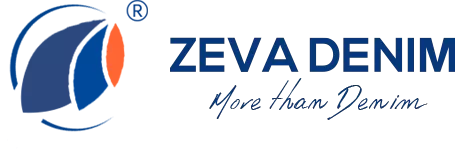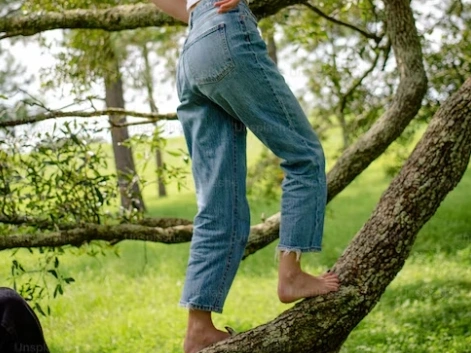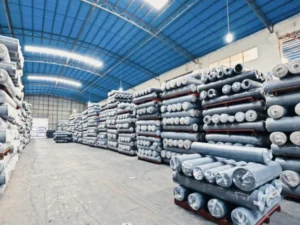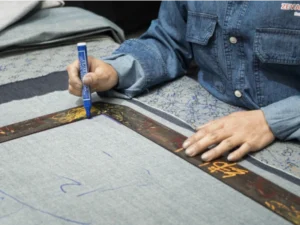Many customers will ask about the difference between denim fabrics containing lyocell or Tencel in daily work. It can be seen that everyone is not very familiar with these fabric components. Today I will explain to you the relationship between rayon, modal, lyocell, and Tencel and the differences between them, so that you can understand the composition of the fabric, and at the same time help you better understand what kind of denim fabric is more suitable for your needs.
The following chart can help you quickly understand the relationship and differences between rayon, modal, lyocell, and Tencel:

The Relationship Between Rayon, Modal, Lyocell, and Tencel
They are a kind of regenerated fiber, which can be collectively referred to as viscose fiber. The raw material of viscose fiber is bamboo or trees. It is decomposed into pulp by technology, dissolved in a solvent, and then undergoes complex chemical reaction processes and machines, and finally forms fabric fibers.
But why they have different names because with the development of viscose fiber production technology and the improvement of human comfort requirements for fabric fibers, the first generation of viscose fiber: rayon, and the second generation of viscose fiber: Modal And the third generation of viscose fiber: Lyocell, as for Tencel, is the brand name of a Lyocell fiber created by the Austrian textile company Lenzing AG. Because this fiber is so well known, it will also be included in this article. To explain, Tencel is also a type of Lyocell.
What Is the Difference Between Rayon, Modal, Lyocell, and Tencel?
As mentioned, they are all a type of viscose, but in reality rayon, modal, lyocell, and Tencel are all slightly different – there are differences in softness and durability due to the raw materials and techniques used.
- Rayon
Rayon is the first generation of viscose fiber, and rayon (sometimes called viscose) is the most common fabric in the market today, and it is relatively cheap, so it occupies the largest market share.
But rayon has its disadvantages. The wet strength of rayon is low, it is not easy to keep its shape when washing, and it is common to shrink or stretch after washing. Moreover, the denim fabric containing rayon has a harder feel and better wear resistance, but its elasticity and resilience are not as good as Modal and Lyocell.
- Modal
Modal is the second generation of viscose.
The raw material of Modal is beech wood. Because, unlike cotton, beech does not require irrigation and cultivation, beech is a natural and sustainable raw material. Modal made from this raw material is soft, biodegradable and has high wet strength.
Modal fabric retains its shape and finish after frequent washing. Therefore, the pants or clothes made of modal denim are also soft and breathable, and the clothes feel softer than rayon.
- Lyocell
Lyocell is the third generation viscose fiber.
As the concept of environmental protection is deeply rooted in the hearts of the people, human beings consider the sustainable development and regeneration of the environment when creating Lyocell.
Lyocell uses renewable bamboo and wood as raw materials, adopts environmental protection technology and organic solvents, not only energy saving and environmental protection, but also sustainable development.
Due to the uniqueness of the process, lyocell has excellent softness and skin-friendly characteristics, and has good moisture permeability and air permeability, so the clothes made of denim fabric containing lyocell components not only have natural luster and smooth hand feeling , soft drape, breathable and light, and almost no shrinkage.
- Tencel
TENCEL is just the brand name for the lyocell fiber created by the Austrian textile company Lenzing AG. There are many types of lyocell fibers, but TENCEL™ lyocell has a reputation for being one of the most innovative lyocell fibers.
Due to Tencel’s unique research and development technology, Tencel’s moisture absorption and perspiration is 70% higher than that of cotton, and its air permeability is three times higher. Tencel is the best choice for customers who have higher requirements on the sweat absorption and breathability of denim fabrics. Of course, the price of Tencel denim fabric is more expensive, which is suitable for making high-end women’s clothing and children’s clothing.

Summarize
To put it simply, the prices are sorted from cheap to expensive: Rayon, Modal, Lyocell, Tencel.
If you were to rank fabric softness and breathability from best to worst, it would be: Tencel, Lyocell, Modal, Rayon.
So today’s topic is over. If you want to continue to learn more about denim fabrics, please continue to follow our blog posts. If you think my article is well written, then move your fingers and send it to friends who want to know “the difference between Rayon, Modal, Lyocell, and Tencel”! Thanks!





